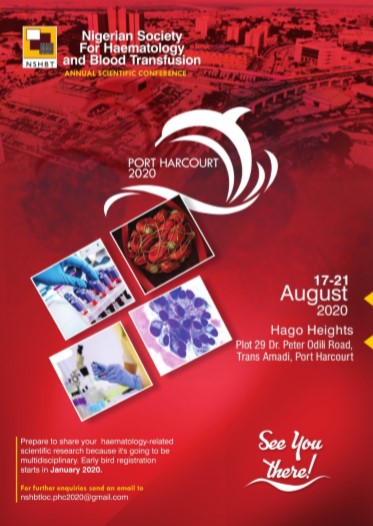Plasma Lead Levels among Children at a Tertiary Health Care Institution in Nigeria
Keywords:
children, plasma lead levels (PLLs), LeadAbstract
Background: A recent report of lead poisoning in children in Zamfara State, Nigeria, suggests the possibility of unacceptable levels of lead in the soil in this area. However, lead contamination from casual home contacts have been poorly documented in this setting.
Aim and Objectives: This study was carried out to evaluate the plasma lead level (PLL) in children attending Paediatric Clinic, with the ultimate goal of detecting children that have plasma lead level above the permissible limit (<5µgPb/dl), in the University College Hospital (UCH), Ibadan, Oyo State.
Materials and Methods: A closed ended questionnaire was administered to caregivers of children aged 12-120 months attending the Children's outpatient (CHOP) clinics and Paediatric wards, of the University College Hospital, Ibadan. Information was obtained on child and parental socio-demographic characteristics, status of house hold painting, source of drinking water and child's habit that may predispose to lead contamination. The children's blood samples were collected and analyzed for plasma lead levels (PLLs) using Flame Atomic Absorption Spectrometry (FAAS).
Results: The mean (SD) plasma lead concentration was 2.6 (0.5) µg/dl (ranged 1.5-4.6 µgPb/dl), all the children had PLLs <5µgPb/dl. In multivariate analysis, sex (p=0.71), occupation of parents or guardian (p=0.63), religion (p=0.58), house painted (p=0.17), source of drinking water (p=0.79), paint peelings (p=0.08), sitting without support (0.68), crawling (p=0.39) and putting of objects in the mouth (p=0.82) had no statistical significant association with PLLs, but children biting the ends of pencils (p <0.001) was statistically significant.
Conclusion: Lead contamination was variable in this group of Nigerian children. A significant contributory factor to lead contamination is the habit of biting the ends of lead pencils. Parental education to prevent such a risky habit is therefore advocated.
Downloads
Downloads
Published
Issue
Section
License
Copyright (c) 2023 Nigerian Journal of Haematology

This work is licensed under a Creative Commons Attribution-NonCommercial-NoDerivatives 4.0 International License.








